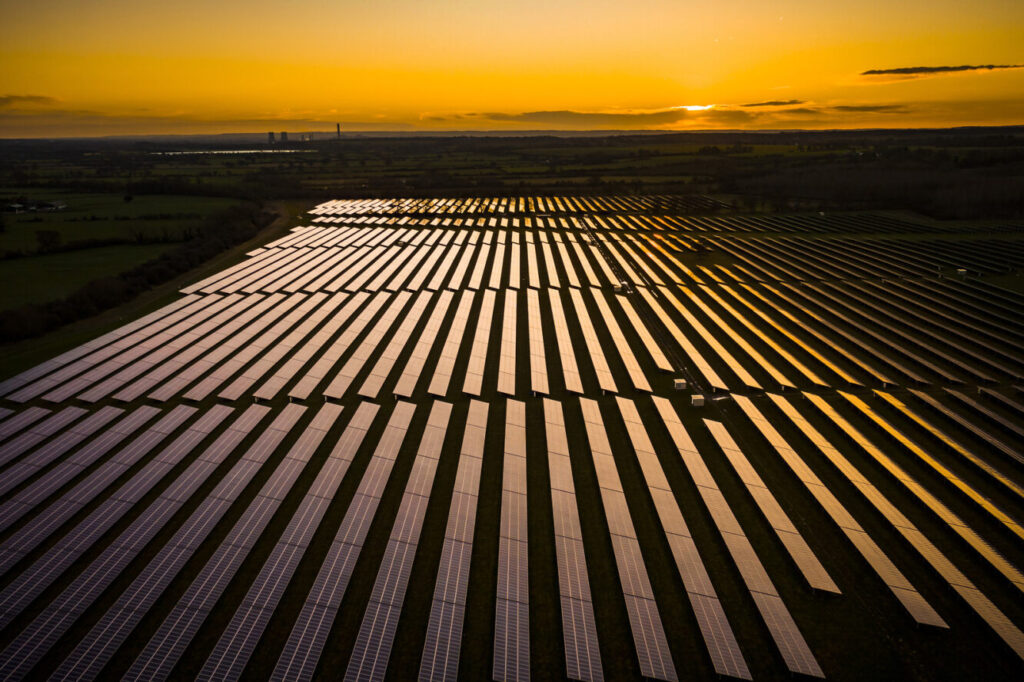GP Profile: Tiger sees growing mid-market opportunities
As a growth investor within the infrastructure asset class, Tiger Infrastructure Partners CEO Emil Henry looks at many companies and potential investments far off the radar of most investors in real assets.
“Much of it we are not going to touch because it is too early stage or too risky or too uncertain, but it gives us a signal of what is going to happen,” he tells Infralogic. “The benefit for us is that we begin to see these patterns in this deal flow.”
Henry believes this gives his firm an insight into what kinds of investments and technologies infrastructure players will be investing in a few years down the line. For example, he points to electric vehicle charging and battery storage as examples of instances in which Tiger was ahead of the market after investing in Qwello in 2021 and Zenobē in 2017.
Henry pointed to several sectors he now believes will start to draw infrastructure fund interest.
“You are going to see the electrification of transport writ large,” Henry says. “Not just EVs, but the electrification of rolling stock, airport rolling stock and other vehicles. You’re going to be seeing a lot of that.”
Some investments in critical minerals may also start to be intriguing, he adds. Infrastructure firms will not take mining risk on one end of the spectrum, nor manufacturing risk on the other. But across the supply and distribution chain, funds may start to look for potential investments.
“Think of it as midstream for critical minerals,” Henry says. “That will be a theme in the coming years.”
Henry launched Tiger Infrastructure Partners in 2010 following the collapse of Lehman Brothers, where he had served as global head of the firm’s private equity investment businesses. At the time, the idea of “growth investing” in the asset class was still a novel one, he says.
“My partners and I, when we were thinking about what to call our strategy, we were a little bit tortured up about it,” Henry recalls. “We took the risk of LPs wondering, ‘What the heck is this growth thing?’”
A decade and a half later, Henry believes the market has come in their direction.
“Growth is accepted. Growth is understood,” Henry says. “Growth is sought after.”
Headquartered in New York, Tiger is focused on three segments of the infrastructure market: digital infrastructure, energy transition, and transportation. The firm, which invests predominantly in North America and Europe, has roughly USD 3bn in assets under management. The firm has raised three funds, the most recent being its USD 1.25bn Tiger Infrastructure Partners Fund III.
The firm is currently raising its fourth fund, according to public documents and previous Infralogic reporting. Tiger declined to comment.
Heading for the exits
Even in a challenging M&A environment, Tiger has been active, Henry says. He cites 23 deals in the past 14 months, including nine add-on acquisitions and four major liquidity events, including three asset sales.
“I don’t lose any sleep over our ability to exit our investments and the evidence I offer is the activity of the last 18 months,” Henry says. “And the reason is that our entire strategy is to build blue-chip, world-class infrastructure that large asset owners want to own.”
In December 2022, the company acquired IAC, an aviation services provider specializing in aircraft painting. Then in November 2023, Tiger agreed to sell a majority stake in fixed-base operated Modern Aviation to Apollo. Deal terms were not announced, but sister publication Mergermarket reported that the valuation represented around 14x to 15x EBITDA.
The same year, Tiger sold its stake in EV and battery company Zenobē to KKR and Infracapital in a deal that valued the company at over USD 1bn. Then in December 2024, Tiger sold a minority stake in Strategic Venue Partners (SVP) to Brookfield Asset Management.
Both Modern Aviation and Zenobē Energy were sold from the firm’s Fund II portfolio. According to one source, the proceeds from these two sales alone exceeded the fund’s total committed capital.
Three paths to growth
While Tiger, which targets private equity-style returns, sells companies that large infrastructure firms want to own, they are not always traditional core assets when Tiger acquires them. The firm has three pathways to growth, Henry explains.
One is to create an asset or company from scratch and build it into a core infrastructure investment. Henry cites Strategic Venue Partners (SVP), a wireless infrastructure firm focused on “complex wireless infrastructure technology solutions.”
“We targeted inbuilding wireless as a high-growth area,” Henry says.
A second growth path is expanding existing assets.
“The typical example is an entrepreneur comes to us, they’ve already built a number of assets, they are up and operating, but they also have a long pipeline, and our pathway is to fulfill that pipeline,” Henry explains.
Zenobē, a UK-based firm that specializes in fleet electrification and grid-scale battery storage, represents this growth path for the company. When Tiger invested in the firm in 2017, it had less than 15 MW in operational assets. When Tiger divested its stake to KKR and Infracapital, its operating and pipelines assets totaled over a gigawatt.
“It went from being a little UK company to being a global company. It’s a real success story,” Henry says.
Finally, Tiger can grow an asset through add-on acquisitions. This Henry describes as classic PE-style rollups, where the firm will find an industry or sector ripe for consolidation.
“It must be highly fragmented and it must be amenable to folks like us gobbling up a bunch of them,” he says. “When we do that, we create scale, we squeeze out synergies, and we sell the thing for a lot more than we bought the pieces.”
Tiger is also somewhat unique in that the company is not looking for yield but aims to reinvest every dollar of capital back into new projects and assets.
“The holy grail for us, in terms of the best optimal outcome, is we are creating or expanding assets and reinvesting that cashflow from the assets,” Henry says. “We are ready to sell it when we have imbued all of the assets with all of the characteristics of core infrastructure, to make it amendable for very large core or core-plus infrastructure investors.”
In targeting private equity-type returns, Tiger has had to look beyond obvious infrastructure assets. Henry points to aircraft painting – and his firm’s investment in IAC – as another investment class that others in the sector will soon turn towards. The firm has seen significant interest in IAC from other infrastructure sponsors.
“It’s an industry with stable, routable demand and strong organic growth given aircraft fleet dynamics, oligopolistic characteristics from a limited number of incumbent players and strong barriers to entry from the hangar concessions and long-term customer contracts and relationships, and attractive unit economics, including very predictable gross margins, low maintenance capex and high free cash flow,” he says. “We were originally attracted to it by some of the similarities to FBOs, where we have a decade of experience from Modern and where you’ve seen a lot of infrastructure sponsors invest in the past few years.”
Tiger was one of the first infrastructure firms to enter the carbon capture and sequestration space, backing Summit Carbon Solutions in 2021. Henry also sees interesting opportunities in recycling, he says.
Mid-market mojo
GP consolidation was one of the major themes of 2024, with mid-market infrastructure firms like Argo Infrastructure Partners and Actis scooped up by larger players. Henry feels this dynamic has left the middle market hollowed out.
“We’re excited to exploit that opportunity for the benefit of our investors, but it’s not a good thing for the industry long-term,” Henry says. “I’d like to see a world in which infrastructure, like the other private markets, is a mature enough asset class to support greater diversification of managers and specialization across geographies, sectors, size and risk-return appetite.”
This has left less competition in the part of the market Tiger looks to invest. Tiger typically writes USD 75m to USD 200m equity checks, a part of the market that he says is less competitive.
“Prices are more realistic,” Henry says. “Negotiations are that much more doable.”
Mid-market firms like Tiger are also not having the same challenges selling their assets as larger players in the space, Henry believes.
“The big issue in infrastructure, I believe, are exits for the large players,” he says. “It is a question how a lot of these large players are going to get out of a lot of these large investments.”
Henry expects the M&A market to pick up in 2025.
“With the caveat that tariffs are the big unknown, the policies of the Trump administration are directionally equity market friendly in their tax policy, in their energy policy, in their deregulation policy,” he says. “These tend to lead to robust environments for business and investment.”
[Editor’s note: The article has been amended post-publication to clarify that Tiger sold its stake in Zenobē to KKR and Infracapital.]











